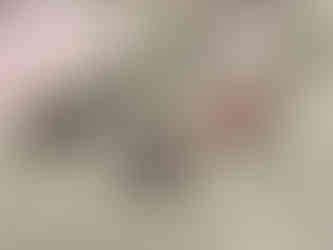Filtered Narratives: The Photography of Untitled 17 Artist Forrest Wasko
- SooVAC
- May 5, 2023
- 4 min read
Updated: May 24, 2024
Almost anything in Forrest Wasko’s world could be a book. Placement and context form the structure of this world, and they curate stories out of images, spaces, and experiences. Forrest is adept at manipulating aesthetic, explicit, and implicit information, while creating a narrative that is a new entity all its own. So when we approach Forrest’s photograph collections like a new story, we are entering as we should: thrown into a new world without former context, but fully open to suggestion and a moment to suspend belief.
Forrest is a familiar friend of SooVAC, appearing in our exhibitions three times since 2018. We gladly welcomed them back for Untitled 17 with their 2021 piece, “Wet Concrete, Minneapolis, MN.” Guest juror Alejandra Peña Gutiérrez, director of the University of Minnesota’s Weisman Art Museum, selected the 16x16” print from over 270 submissions.
Forrest’s collections begin with them observing and documenting, photographing instinctively as they go. They prefer to work with cameras that require more consideration before capturing an image (they listed a preference for Hasselblad and Rolleiflex, which sound like some kind of ultra-cool, steam-powered machines to me, but I’m hoping are little treat for the photo-literate among you).
“These photos don’t need speed, like street photography,” Forrest explains. “This process is slower and more satisfying, because I get to be selective.” The format allows for larger prints, and gives each image a more tactile character. This considered process is something Forrest began exploring in late 2020–which, if you recall, is right about the time we were in peak lockdown (sorry about the reminder). That context makes perfect sense as the breeding ground for an intimate conversation, like the ones in Forrest’s collections, and an elegant, non-virus-transmitting way of sharing stories with others.
Part of that intimate conversation is reflection: Forrest’s self-reflection and the viewer’s own reflection on the subject exist at the same time. But rather than a mirror, Forrest sees themself acting as a filter: visual facts are morphed into new images that reflect their thoughts in finished prints. “Most of the photos aren’t about the subject,” they share. “They’re a way for the subject to be a metaphor for something else.”
“Wet Concrete,” which features a heart around lines spelling “h & k” pulled through, yes, wet concrete, could have been taken anywhere; we don’t see any distinguishing characteristics or landmarks, and this is by design. Forrest captures just enough information to blur meaning and invite speculation from the viewer.
The physical product is parallel to the conceptual, as most of Forrest’s photos are taken analog, but printed digitally, and often undergo some manipulation first. For me, this was the most surprising part of seeing Forrest’s work. Looking through a collection of 2x2” prints in their studio, I assumed they were printed traditionally, but Forrest told me they were instead printed at the same size they would traditionally be, but digitally, on photo paper. Elements that could place an image in a particular city or time are removed, keeping Forrest in control of the story without ever letting the viewer know.
The ambiguous presentation is part of Forrest’s manipulated narrative and, I think, very clever. With expertly camouflaged alterations and a physical format that could be from any source, who could ever find the line between what is “true” and what is concocted? And I find myself not wanting to find that line, but to lose myself in the world of the image instead.
“I’m not interested in capturing the truth,” Forrest tells me. “My work isn’t documentary or journalistic, and it’s not an objective record.” In the absence of these more utilitarian functions of photographs, the images take on their own life, existing in a carefully designed conversation with the images directly before and after. Forrest’s thoughtful orchestration is woven throughout this conversation, sometimes inserting clever juxtapositions that the viewer is invited to find. They compare assembling each collection to making a crossword puzzle. The question they’re asking as they go: “How do these images overlap in multiple planes?”
When choosing individual photos for gallery submissions, like they did for Untitled 17, Forrest knows the individual images will lose their context, especially since they don’t know which photographs of their full submission might be chosen. But they see potential for a new narrative in the gallery and a very different conversation, with pieces from other artists bookending the images instead of more photographs. (Everything is a book, remember?!)
If you get the chance to see Forrest’s work, especially in its full context of a collection or book, we highly recommend it; the experience is a quiet, thoughtful ride through Forrest’s observations, and a chance to add your own story to their narrative. Forrest is a member of MirrorLab, a studio collective and programming space in South Minneapolis where they often participate in exhibits with studio mates and other artists, so if you're in the area, keep up with MirrorLab's art events through their Instagram.












